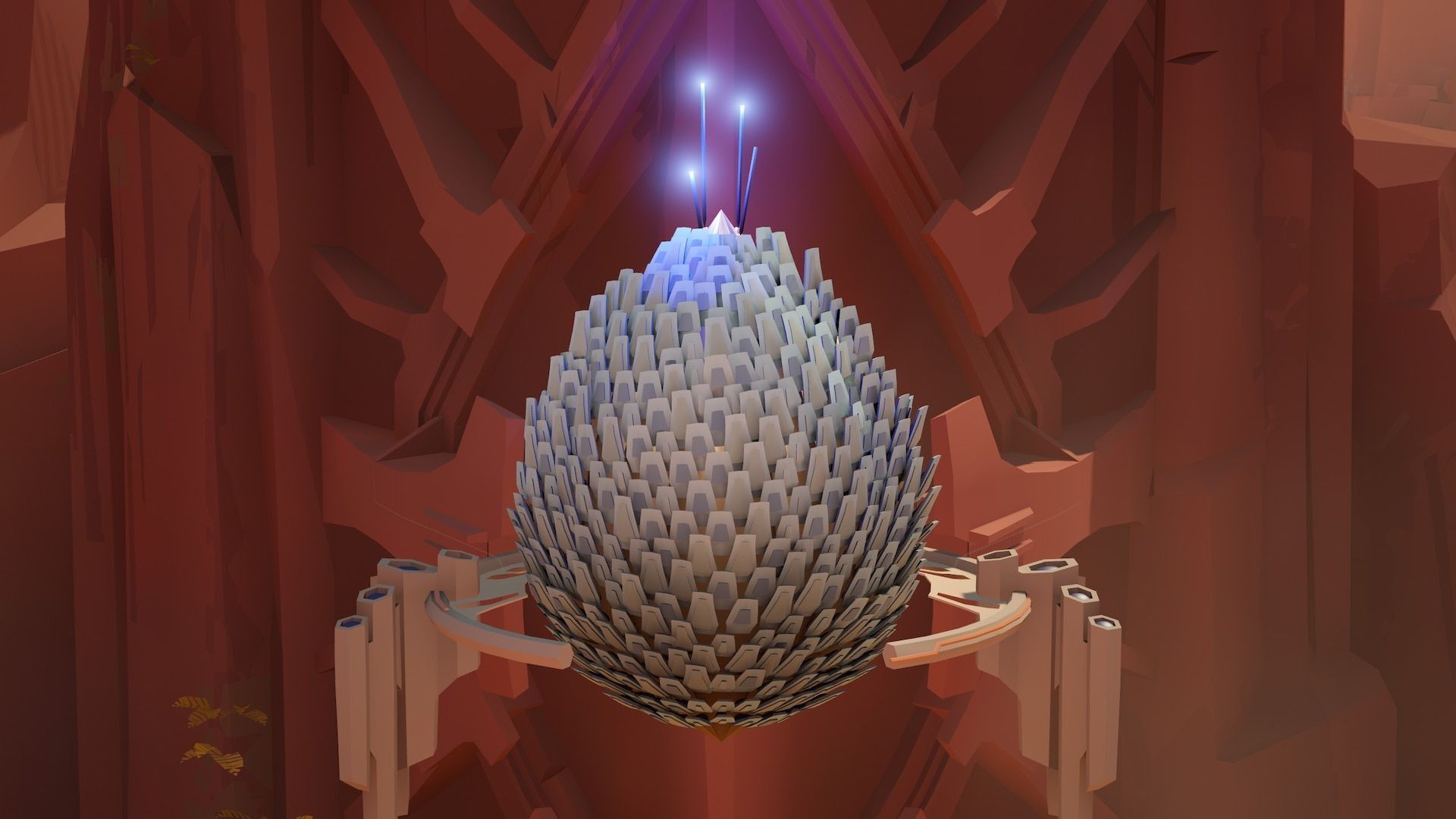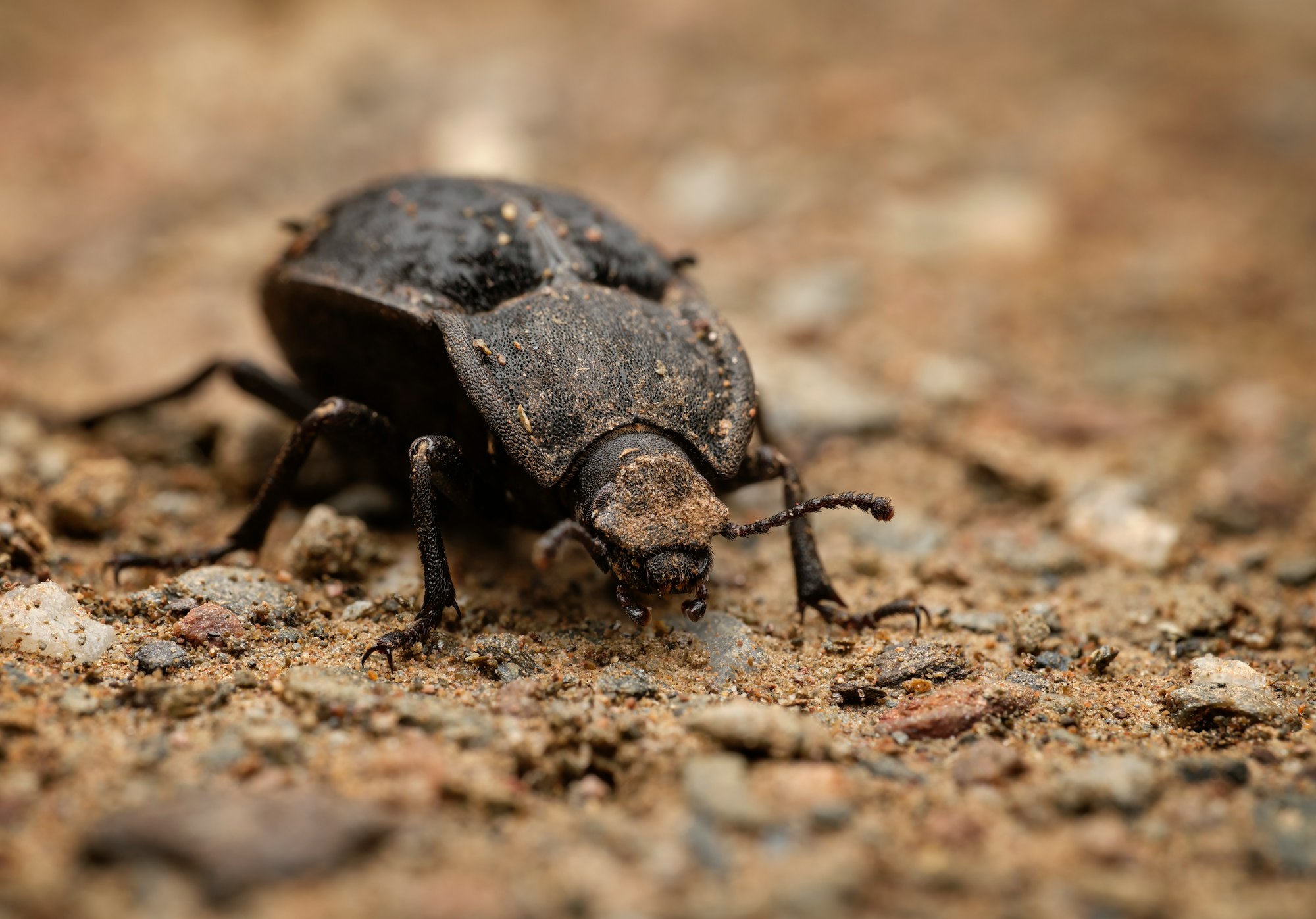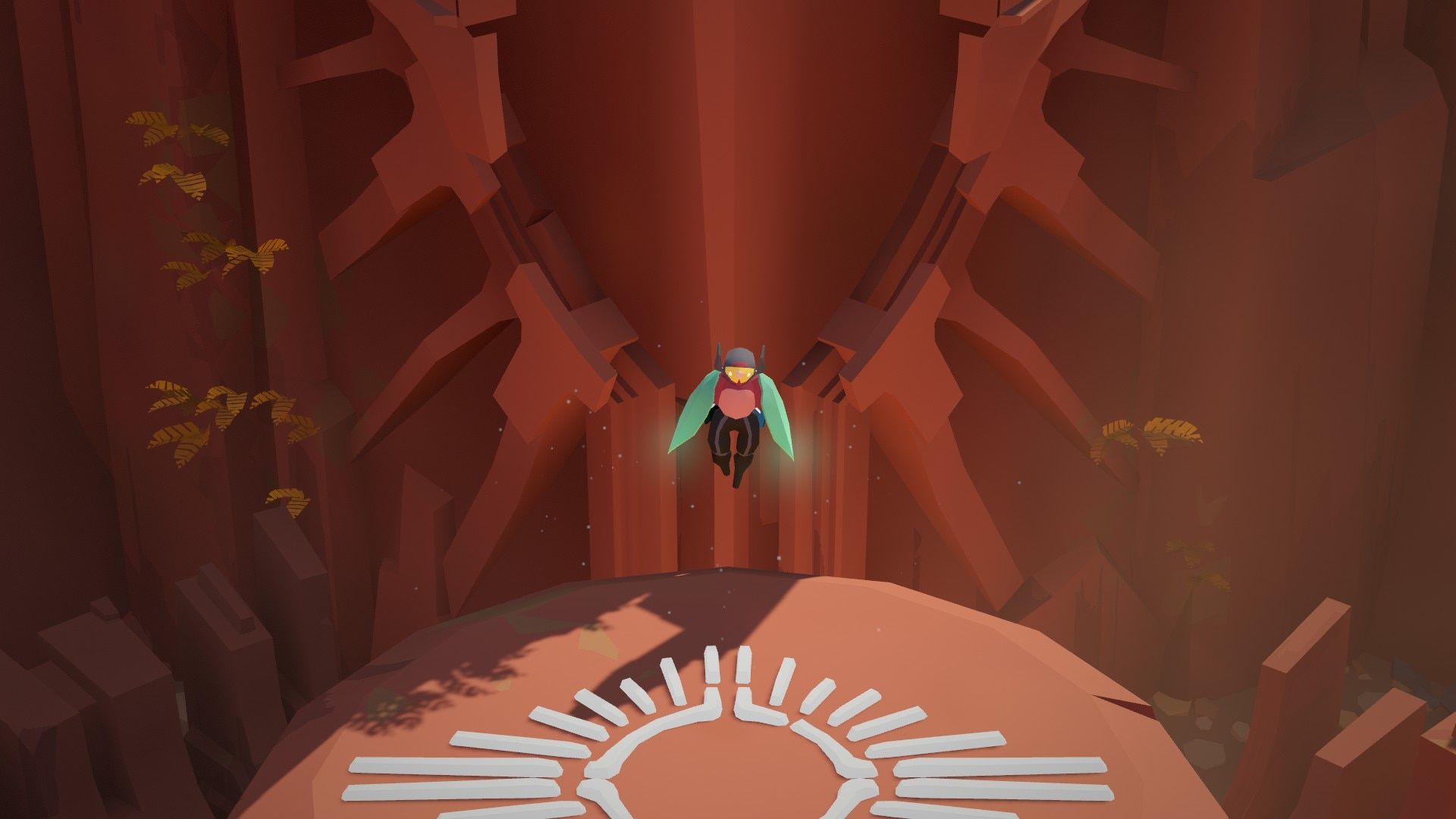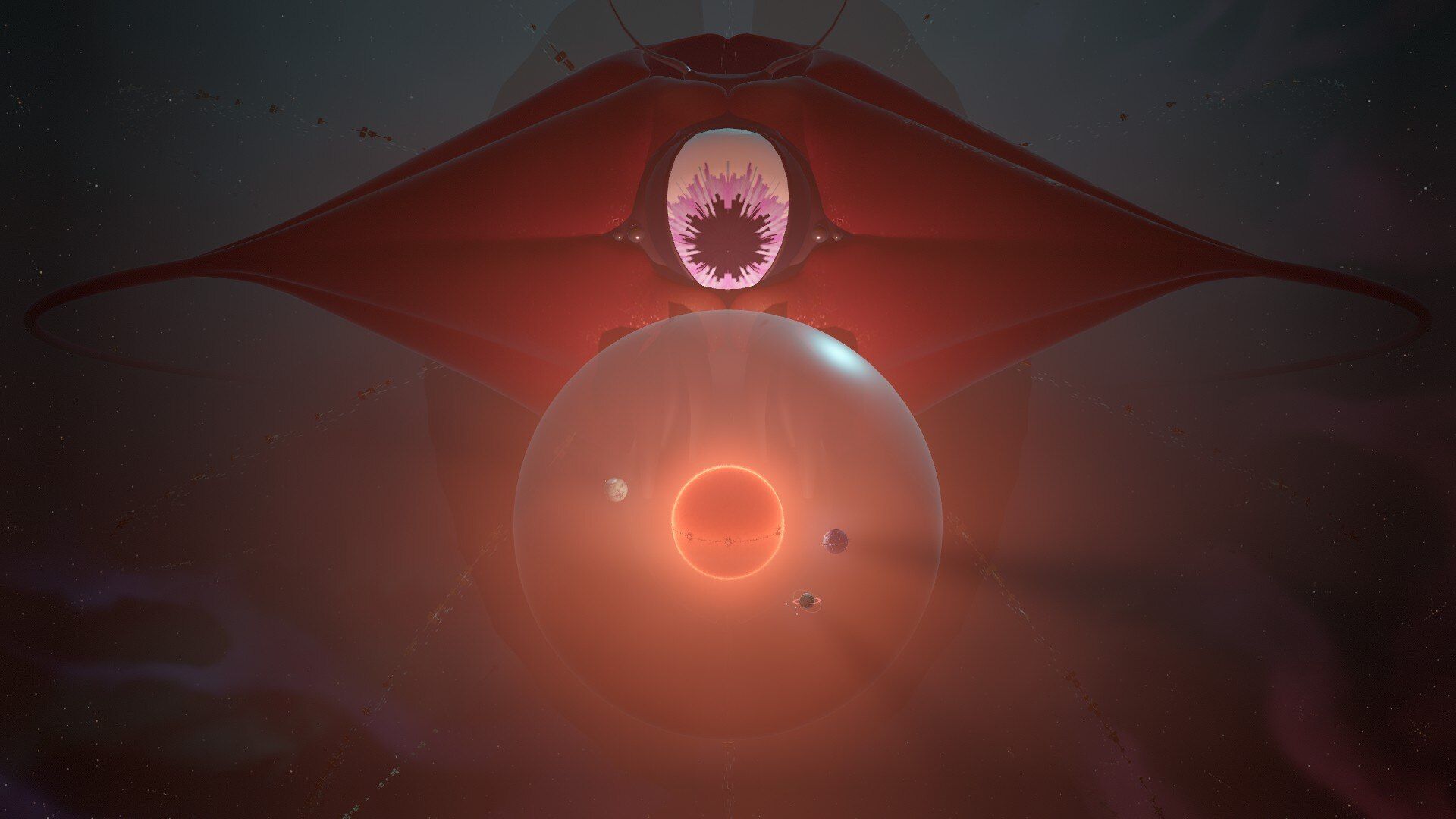Cocoon: Metamorphosis and Renewal
Tracking instinct and ancient beliefs through a journey of our planet's great keepers

Cocoon is a visual narrative that is universally accessible. Its world is alien and strange to us, but we can intuit its nature by recognizing patterns from our own environment. Its themes of life and renewal, and questions about the cosmos, speak to us no matter our culture. We can solve its metaphysical puzzles that should be indecipherable because of our ability to think in abstract terms. It is a story about life and demonstrates our connection to the universe using its medium to showcase what we all instinctively do and feel.
Cocoon does not begin in exposition; it begins with birth, a lonely birth with no manual or tutorial. Only in the act of moving forward, interacting, and exploring, does this life and narrative slowly reveal itself. The birth has hints of the divine; a beam of light descends from the sky and out of an egg emerges a bi-pedal insect, reminiscent of a beetle. Its world is an arid landscape with unknown flora and strange machinations. Just as we begin to get our footing, one such mechanism expels us from the world and into another, where the previous sits as a small orb. It is here that Cocoon's layered story and mythology begins using these worlds within worlds, and, most importantly, insects.
Telling an abstract, alien story has to subtly remind its audience of something from their own realm of understanding. Cocoon explores its unknown language and insect-esque species by reminding us of ancient Egypt and the scarab beetle.
The Scarab
The family of beetles known as Scarabaeidae, consists of over 35,000 species of beetles that exist all over the world. They are essentially, as widespread as we are.
One of the more famous of these beetles is Scarabaeus sacer, the dung beetle revered in Egypt, often referred to in an all-encompassing way as "The Scarab Beetle".

The scarab constructs a sphere of dung and debris and rolls it ahead of them while they move. When they gather enough and have a large sphere in hand, the beetle burrows an underground chamber to house the ball within.
Scarabs lay their eggs in this chamber and when the larvae hatch, they feed on it to grow before emerging from the ground. The ancient people saw these old beetles submerge and then seemingly emerge younger. Others thought the beetles were born from the sphere or from the Earth itself; a divine birth.
While Western storytelling has often portrayed the scarab as a symbol of horror (like the man-eating variety from the 1999 film, The Mummy) to the Egyptians, the scarab was a symbol of rebirth and renewal.
Khepri (meaning: he who has come into being) was a god who presided over the morning sun. He is portrayed as a human-like figure with a scarab beetle for a head and great wings as his arms. It was believed he pushed the sun along through the sky just like a beetle.

The character played in Cocoon bears a striking resemblance to a scarab (and thus Khepri) despite its bipedal nature. While it does not push the spheres as it moves, it carries it on its back, giving the image of Atlas, the Titan from Greek mythology. It was Atlas who was condemned to hold up the heavens for all eternity.
The scarab does, in fact, have a fascinating connection to the celestial. The beetle is an incredible navigator that uses the sun to orient itself, often pausing to climb on top of its sphere and consult the star. When they roam at night, they will use the moon. In the absence of the moon, it was discovered that they will use the Milky Way itself to act as a compass. Billions of stars as a guiding light, and the scarab is the only creature proven to do so.
They are pivotal to their ecosystems, distributing fertilizer as they roam to help grow new life of all kinds.
So here we have a creature believed to be self-propagating, modeled after a god that moves our great star, who carries a life-giving sphere and navigates using the heavens themselves. It's no wonder the Egyptians held them so highly, and that they act as a perfect being in a story about cosmic renewal and evolution.
Instinct

It has been asked: When a caterpillar cocoons itself to become a butterfly, does it really know what it's doing?
Insects don't anticipate the future or ask big questions about the nature of their reality. They act on deep-seated instinct, work tirelessly, and respond to immediate stimuli, not unlike an NPC in a videogame. They don't know the nature of the game, but still they play.
The player does not know their objective in the beginning - the insect hatches and control begins - but they find their way naturally. There is a knowledge of video game language at work here that can keep players moving forward without even knowing what they are moving toward. Switches, bridges, chutes, and other commonplace things look strange in this world but we can still recognize their function. Over time it becomes obvious that gathering these orbs - these worlds - and nesting in them seems to be what we should do, like some deep-seated instinct, just like a caterpillar knows when its time to turn itself to goop in a cocoon and metamorphosize.
And there's that word. Cocoon.
There is an old story that tells of a man who stumbled upon a butterfly struggling to emerge from its cocoon. The man, kind and eager to help, cut open the cocoon so the butterfly didn't have to struggle. When it emerged, the creature's wings were small and its body large. There was nothing it could do but crawl on the ground. What the man did not know, is that in a butterfly's struggle, fluid is pushed into their wings, causing them to expand and grow. Struggle is part of its growth. Helping a butterfly leaves it too weak to survive.
To fly, to truly metamorphosize, it needs to first struggle. It has to earn its way out of the cocoon.
The End is the Beginning


Life has to be lived forward but is really only understood by looking backward. Cocoon is a prime example of a narrative that can only work within the game medium. It takes reaching its ending to contextualize the journey that you have embarked on, operating on instinct.
When the beetle first emerges from the arid canyon world, it finds itself in a small chamber within the sphere, much like a scarab in its underground nest. A large guardian insect looms over the sphere and then disappears within it. The initial gameplay loops involve maneuvering through these worlds, solving puzzles while carrying these worlds along, and overcoming their insect guardians. The complexity of the stacked worlds slowly mount.
The worlds appear derelict as if they are long forgotten; their inhabitants moved on or perished.
The last sphere marks a shift in progression. Face to face with a massive insect god, it takes the orbs but is not hostile. It tests the young beetle and it rewards it by returning the orbs one by one. Suddenly, the whole journey feels less like a struggle for survival and more like a struggle to prove oneself.
Now on a celestial surface above the sun, the final task involves placing the spheres inside one another, creating a layered seed of embryonic leaves and it becomes clear it has all the ingredients of life. A rocky core & base, water & vegetation to nourish, organic life to thrive there, and technology & industry for advancement.
The seed emerges from the star, spitting each sphere out; every one a new planet in a new solar system. A solar system now renewed from its derelict state, ready for life once again.
Our hero now emerges as an insect god like the one that tested it before, and it looms over the solar system of its creation, having earned its way out of the cocoon, awaiting the cycle to begin anew.

